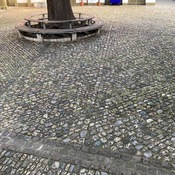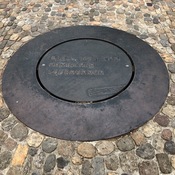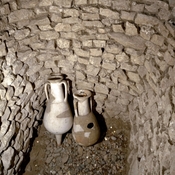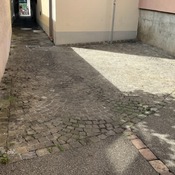Late Roman period of Basel
From about 250 AD, a period of domestic political crises followed. In addition, there were threats from outside. Germanic peoples, such as the Alemanni, penetrated into the rich Roman provinces and attacked the population. The border of the Empire was transferred back to the Rhine. Around 270/280 AD, the Münster hill was fortified with a perimeter wall. The residences in the forecourt were abandoned, their inhabitants either moved behind the fort or emigrated. There, where Murus Gallicus used to stand, a new wall of moats was erected. For the construction parts of broken, partially representative buildings and even grave stones were used, indicating an acute threat situation.
In the 4th century, the fortification on the cathedral hill was part of the sophisticated border security system along the Rhine. In connection with this last great Roman fortress building program the name Basel is mentioned for the first time: According to the Roman historian Ammianus Marcellinus emperor Valentinian stored with his troops with Basilia in the year 374.
After the Visigoth invasions in Italy in the winter of 401/402, Rome withdrew a large part of the troop contingents from the northern provinces. Thus began the end of Roman rule. The Romans, the descendants of the Gallo-Roman population, were now largely left to their own devices. The securing of the borders got partly Alemanni and Franks as federated Rome.
The military power of the Romans ended around 454 north of the Alps with the death of the Roman army commander Aetius. A part of the Romansh population migrated, but many stayed here and arranged with the new Germanic neighbors.















